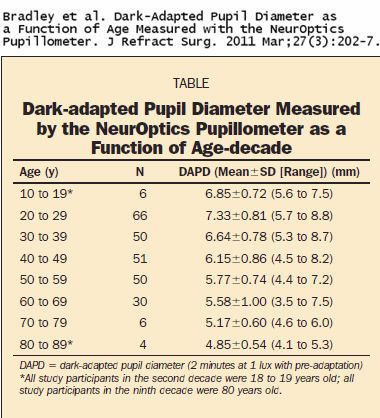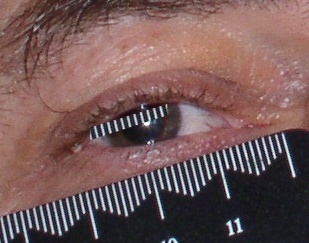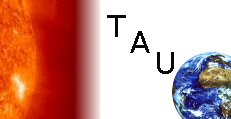This page last modified 2017 December 06
A Basic Eyepiece Set
The formula I use to select eyepieces is from my book AstroFAQs. From that basis, I get the following as what I consider to be a basic eyepiece set, possibly as a first replacement for the cheap eyepieces that came bundled with your telescope.
Get the best that you can afford that is suitable for your purpose. In order, acquire a medium, low and high power eyepiece — that is the order of their usefulness:
- A low-power eyepiece is one that gives a magnification of approximately one sixth of the telescope aperture in millimetres. Its focal length in millimetres will be about 6 times the focal ratio of the telescope. Get one that gives you the widest possible field for your telescope. For a 1.25" diameter eyepiece, the focal length multiplied by the field of view should be around 1600 (e.g. 32mm, 50° FoV); for a 2" it should be around 2800 (e.g. 40mm, 70° FoV). Ensure that the exit pupil does not exceed the size of your eye's pupil (see below).
- A medium-power eyepiece is one that gives a magnification of approximately half the telescope aperture in millimetres. Its focal length in millimetres will be about equal to the focal ratio of the telescope. This will be your most used eyepiece, so get one you like using!
- A high-power eyepiece is one that gives a magnification approximately equal to the telescope aperture in millimetres. Its focal length in millimetres will be about the same as the focal ratio of the telescope. This will be your least-used eyepiece, but will be used for making critical observations when seeing is excellent.
The next question is usually "which type?". There is a certain amount of personal preference here (if you can, try before you buy), but there are some basic rules-of-thumb.
- "Old school" eyepiece designs like Orthoscopics tend to have narrower fields of view and less eye relief than many modern designs, but can give you the best value for money in image quality.
- Most eyepiece types work acceptably well at f/7 and higher focal ratios. I favour Erfles and Konigs for low power eyepieces, Erfles or a Orthoscopics for medium power, and Orthoscopics for high power. The BST Explorers/StarGuiders are also pretty good value for money as a medium power eyepiece, but decent Orthoscopics are noticeably better for lunar/planetary observation.
- With focal ratios less than f/5, most budget and "old school" eyepieces do not work well. Eyepieces that work well here (e.g. TV Naglers or Explore Scientifics) are more expensive.
- Almost nothing works at f/3.
Zoom Eyepieces:
This tutorial is about a Basic eyepiece set, and is aimed primarily at newcomers to the hobby. A zoom is not really basic for at least two reasons:
- A usable zoom will cost at least as much as 3 basic eyepieces of equivalent optical quality.
- They will normally only substitute for a medium power eyepiece. On rare occasions, they will also substitute for a high power eyepiece, but with a significant loss of quality (Pentax zoom excepted). They will never substitute for a wide-field lowest power eyepiece.
For what it's worth, my take on zooms is that, for casual observation, they are great fun — I do like playing around on the lunar terminator with a zoom — that's the real space-walk experience! They are fine in the mid-range of magnifications but, apart from the Pentax, all the ones I have used have the image start to go a bit mushy at the high-magnification end, and the edge goes to pot at the low magnification end (where the AFoV is lowest, so it becomes obtrusive to me). Also apart from the Pentax, there is ghosting on bright objects. The Vixen LV and clones actually have two ghosts; the second becomes apparent at around f/6 (when the first ghost becomes obtrusive). The Baader Hyperion is somewhat less haunted, but is not entirely exorcised.
Up until about 10 years ago, when I used to do a lot of imaging, my LV zoom was easily my most used eyepiece. I also used to use it, at the 24mm end, to help find and centre guide-stars with the pick-off prism in the off-axis guider (replaced with a proper guiding eyepiece for actual guiding, once the guide star had been acquired) — the narrow FoV is actually useful for this purpose; easier to centre in a narrow FoV. Now that I do mostly visual observing, I prefer the better image quality of my "fixed" eyepieces.
Another advantage of a zoom is that it is easy to find, by trial and improvement, the ideal magnification for each object under the observing conditions you find yourself under. For this reason, I have never understood the need for click-stops except for use in binoviewers — I find what I want by looking through it and adjusting it until it is right, not by setting it to some pre-determined number. (But, click-stops are valued, so I must be in a minority here … again!)
A word or two on pupil size and age:

It is frequently correctly stated that you are "wasting" light of the exit pupil of the eyepiece exceeds your eye's pupil size.
In various places on the internet you will find statements to the effect that by the age of 40 (or 45 or 50 or...) the pupil cannot open beyond (usually) 5mm. This bit of "internet wisdom" has been doing the rounds for decades in one form or another, and I have been guilty of repeating it myself in the past. I suspect that the pupil dilation of a few unrepresentative people was measured, and assumed to be representative. I measured mine when I turned 60 and found it to be 6.3mm; I assumed that I was unusual, but last year I found this study.
I think the most important thing is the range of values in each age cohort. It suggests that we cannot make assumptions about any individual and that the sensible thing is to measure your pupil size.

If you are concerned that your eye's pupil may vignette the telescope image, you should measure your exit pupil. This is most easily done approximately by standing in front of a mirror at night, waiting 30 seconds or so for your pupils to dark adapt, hold a ruler under the eye, in the same vertical plane as your pupil, photograph the eye in the mirror (use flash, but not anti-red-eye pre-flash), then use image manipulation software to move a section of the ruler over the diameter of the pupil.
Affiliation Disclosure
Stephen Tonkin is a participant in the Amazon EU Associates Programme, an affiliate advertising programme designed to provide a means for sites to earn advertising fees by advertising and linking to Amazon.co.uk.
Stephen Tonkin is a participant in the Amazon Services LLC Associates Program, an affiliate advertising program designed to provide a means for sites to earn advertising fees by advertising and linking to Amazon.com.
Stephen Tonkin is an affiliate of First Light Optics which provides a means for sites to earn commission by advertising and linking to firstlightoptics.com.


